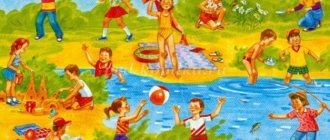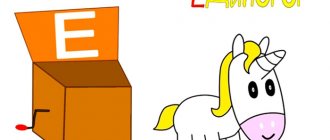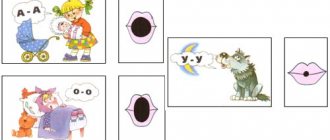The main goal pursued by plot pictures for composing a short story is the desire to develop the speech and thinking of children. Looking at the picture, the guys try to describe what is depicted on it, trying to compile a single, logically coherent story. Unfortunately, the speech of today's young people is far from perfect. Children and teenagers read and communicate little. Therefore, family, teachers, and all adults surrounding the child should pay attention to the development of correct literary speech. There are a huge number of ways to do this.
How can they be used?
One of them, already mentioned, is pictures for making a short story. On our website you will find story pictures for children. It is extremely important that the images are subordinated to a single theme, which means that the child, looking at them, will be able to compose a coherent message or play role-playing games for preschoolers. It is not for nothing that when teaching a foreign language, students are asked to describe a picture, come up with a dialogue according to the presented situation, and create role-playing games. This technique is also applicable when teaching the native language in a kindergarten or aesthetic center. You can download illustrations for writing a short story and print them for work.
The technique for developing speech based on pictures for composing a short story is simple. We advise parents to play role-playing games with their baby, lay out illustrations in front of him, and come up with a story together, a story in which the baby’s family or friends will be involved. Make sure that when describing, the child does not jump from one action or object to another, but expresses his thoughts consistently and logically. Having conducted such a lesson once, return to the worked picture after a while: ask the child if he remembers the story he compiled, what details he did not take into account, what he could add. A series of plot pictures for composing a short story are good for lessons on speech development in primary school, in native or foreign language lessons. Descriptions of illustrations, role-playing games, and a story based on them can be a good basis for creative work. Usually children respond with pleasure to such tasks, since children's imagination has not yet taken root, its flight is free and unhindered.
The method of working with pictures for children will require attention and regular practice from parents. It is the family that should be interested in the development of the baby. They should help him create a story, role-playing games for preschoolers, and then discuss them together.
A series of pictures for kindergarten or home use for children are focused on different topics. For example, you can compose a story on the topic “Family”, “Seasons”, “Forest”, “Home”, etc. The methodology for developing speech for children involves comprehensive coverage of topics on which a story can be compiled. The technique also involves the use of games for kindergarten, which will contain illustrations or a story on the chosen topic. As a result of a series of such activities, children begin to speak much more coherently, logically, and a single thread can be traced in their speech.
COMPILATION OF STORIES BASED ON SUPPORTING PICTURES. outline of a lesson on speech development on the topic
COMPILATION OF STORIES
BY REFERENCE PICTURES
Objectives: to teach to identify and reproduce the logic of a descriptive story; compose plot stories based on pictures in accordance with the structure of the content.
Progress of the lesson I. Organizational moment. Repetition of rules of behavior at school:
a) when meeting, greet adults, comrades, teachers;
b) in class: when answering, raise your hand, answer standing, do not shout; listen carefully to the teacher and classmates;
c) during recess: you cannot run or push each other.
II. Updating basic knowledge. 1. Working with puzzles.
(Stork, butterfly, mustache, water.)
The teacher prints clue words on the board.
- Type the words in your notebook. For those who cannot type, copy the first letter of each word from the board.
- Use a red pencil to underline the letters denoting vowel sounds, and use a blue pencil to highlight the letters denoting consonant sounds.
- Name words that begin with a letter indicating a vowel sound.
- Name words that begin with a sound indicating a consonant.
- What can you say about the stork? butterfly? mustache? water?
- Name words that can be somehow related in meaning (stork - water, butterfly - mustache).
2. Game "Name your sound."
There are objects or pictures mixed up on the table. Having divided into teams, the children come to the table.
Task: select objects whose names begin with the same letter. (Ball, car, doll, bear, boots.)
- Is there a fairy item among the remaining items? (Boots.) In what fairy tales are boots found?
- How is a fairy tale different from a story?
Physical education minute
Up hand and down hand. They pulled them lightly. We quickly changed hands! We're not bored today. (One straight arm up, the other down, switch hands with a jerk.) Squat with clap: Down - clap and up - clap. We stretch our legs and arms, We know for sure that it will do good. (Squats, clapping your hands.) Twist and turn your head, Stretch your neck. Stop! (Rotate your head to the right and left.) And in place we walk, Raising our legs higher. (Walking in place: raise your knees high.) Stretch, stretch Up and to the sides, forward. (Stretching - arms up, to the sides, forward.) And everyone returned to their desks - We have a lesson again. (Children sit at their desks.)
III. Formation of new concepts. Compiling a story.
- Today we will learn how to write a story correctly. Look at the picture. What will this story be about? (About the doll.)
- So, the main character is a doll.
1st picture. (The girl plays with toys, including several dolls.)
- To make the story more interesting and clearer, let's give the girl a name.
- Any story has a beginning that describes where the events take place, with whom, and who the main character is.
- Come up with a start based on the first picture.
2nd picture. (Mom gives a new beautiful doll.)
- What happened next?
- How did the girl react to the gift? (I forgot about all the dolls and started playing only with the new doll.)
3rd picture. (The girl is playing with a new doll, but has abandoned the old ones.)
4th picture. (The new doll lies to the side, the girl finds the old doll under the table.)
— Why did the girl leave the new doll aside?
— What happened to the old toys?
— Why is the girl looking for an old doll? (Closer, dearer.)
5th picture. (The girl washes the doll and clothes.) - How did this story end?
- Who can tell the whole story?
- Did you like the story?
IV. Formation of practical skills: working with text.
1. Teacher reading the story by V. A. Oseeva “Magic
word".
“I’ll read you a story called “The Magic Word.” Think about why it was called that.
THE MAGIC WORD A little old man with a long gray beard was sitting on a bench and drawing something in the sand with an umbrella.
“Move over,” Pavlik told him and sat down on the edge. The old man moved and, looking at the red, angry face
boy said:
- Did something happen to you?
- Well, okay! What do you care? — Pavlik looked sideways at him.
- Nothing for me. But now you were screaming, crying, quarreling with someone...
- Still would! - the boy muttered angrily. “I’ll soon run away from home completely.”
- Will you run away? -I'll run away! I’ll run away because of Lenka alone. - Pavlik clenched his fists. —
I almost gave her a good hard time just now! Doesn't give any paint! And how many do you have?
- Does not give? Well, there's no point in running away because of this.
- Not only because of this. My grandmother chased me out of the kitchen for one carrot... just with a rag, with a rag...
Pavlik snorted with resentment.
- Nonsense! - said the old man. - One will scold, the other will regret.
- “Nobody feels sorry for me,” Pavlik shouted. “My brother is going for a boat ride, but he won’t take me.” I tell him: “You better take it, I won’t leave you anyway, I’ll drag the oars away, I’ll climb into the boat myself!”
Pavlik slammed his fist on the bench. And suddenly he fell silent.
- Why doesn’t your brother take you?
- Why are you all asking? The old man smoothed his long beard:
- I want to help you. There is such a magic word... Pavlik opened his mouth.
- I'll tell you this word. But remember: you need to say it in a quiet voice, looking straight into the eyes of the person you are talking to. Remember - in a quiet voice, looking straight into your eyes...
- What word?
The old man leaned close to the boy's ear. His soft beard touched Pavlik’s cheek. He whispered something and added loudly:
This is the magic word. But don't forget how to say it.
“I’ll try,” Pavlik grinned, “I’ll try right now.” “He jumped up and ran home.
Lena was sitting at the table and drawing. Paints - green, blue, red - lay in front of her. Seeing Pavlik, she immediately
. I grabbed them into a pile and covered them with my hand. “The old man deceived me! — the boy thought with annoyance. “Will someone like that understand the magic word!..” Pavlik walked sideways towards his sister and pulled her by the sleeve. The sister looked back. Then, looking into her eyes, the boy said in a quiet voice:
- Lena, give me one paint... please...
Lena opened her eyes wide. Her fingers unclenched, and, taking her hand off the table, she muttered embarrassedly:
- Which one do you want?
- “I’ll have a blue one,” Pavlik said timidly.
He took the paint, held it in his hands, walked around the room with it and gave it to his sister. He didn't need paint. He was now thinking only about the magic word.
“I’ll go to my grandmother. She's just cooking. Will he drive away or not? Pavlik opened the door to the kitchen. The old woman was removing hot pies from the baking sheet. The grandson ran up to her, turned her red, wrinkled face with both hands, looked into her eyes and whispered:
- Give me a piece of pie... please.
Grandma straightened up. The magic word shone in every wrinkle, in the eyes, in the smile.
- I wanted something hot... something hot, my darling! - she said, choosing the best, rosy pie.
Pavlik jumped for joy and kissed her on both cheeks. "Wizard! Wizard!" - he repeated to himself, remembering the old man. At dinner, Pavlik sat quietly and listened to his brother’s every word. When his brother said that he would go boating, Pavlik put his hand on his shoulder and quietly asked:
- Take me, please.
Everyone at the table fell silent. The brother raised his eyebrows and grinned.
- Take it,” the sister suddenly said. - What is it worth to you!
- Well, why not take it? - Grandma smiled. - Of course, take it.
“Please,” Pavlik repeated.
The brother laughed loudly, patted the boy on the shoulder, ruffled his hair:
- Oh, you traveler! Okay, get ready!
“It helped! It helped again!”
Pavlik jumped out from the table and ran into the street. But the old man was no longer in the park. The bench was empty, and only incomprehensible signs drawn by an umbrella remained on the sand.
2. Conversation based on content.
- Did you understand all the words?
- Why was the story called “The Magic Word”?
- Why did Pavlik want to run away from home?
- Why didn't Lena give paint? Grandma - carrots? Didn't your brother take you on a boat ride?
- What advice did the old man give him?
- How did Pavlik use the advice?
- Did the old man's advice help him? How?
- Why did Pavlik run to the park again? V. Summary of the lesson.
- What other magic words do you know? Why are they called magical?
— In what situations do you use these words?
Developmental materials on the topic
Kindergarten
Pictures on different topics
Methodology “Sequential pictures” test in correctional pedagogy
Methodology “Sequential pictures”
This technique is intended to assess the possibilities of compiling a coherent story from a series of pictures united by a single plot, and to establish connections between the events reflected in these pictures. The child is asked to look at a series of pictures with a sequential development of the plot and compose a story. The child must highlight significant details and their changes in different pictures to assess the semantic line of the plot.
The understanding of the storyline, the coherence and meaningfulness of composing the story, the possibility of selecting a title for this plot are assessed, and the level of the child’s speech development is characterized.
Age-related features of use. This sequence of pictures can be presented to children starting from 4.5-5 years of age (from 4.5 years of age with organizing help).
Analyzed indicators:
— accessibility of the task, the ability to establish cause-and-effect and temporal relationships, complete understanding of the meaning;
— features of speech development (volume of total independent speech production, number of productive and unproductive words in a statement, etc.);
— strategy of visual perception;
— general strategy of activity;
- the amount of adult assistance required when analyzing a series of pictures.
Children with normal mental development look at the pictures with interest, understand the instructions and complete the task. They independently establish the sequence of events, arrange pictures in the right order, and accompany their actions with speech. The quality of the story varies: from a sparse description to a detailed story. Some children bring elements of their own experiences or observations into the story.
Mentally retarded children cope with this task much later (by 7-8 years). At 5-6 years old, they are limited to naming individual pictures (“Boy”, “Still a boy”, “Eating”) with the help of leading questions. They do not establish the sequence of actions depicted in the pictures. Help is not used.
Children with mental retardation show interest in the task. By the age of 6, they can understand the sequence of events depicted. However, when unfolding, they often need leading questions. They find it difficult to compose a detailed story.
Analysis of results:
0 points - Couldn't cope.
1 point - The story is based on two pictures, there is a logical connection.
2 points - The story is compiled correctly based on three pictures, but does not answer clarifying questions or justify it.
3 points - The story is compiled from three pictures, answers clarifying questions, and logical connections are clearly identified.
4 points - The story is compiled correctly based on four pictures, but does not answer clarifying questions and does not justify logical connections.
5 points - The story is compiled from four pictures, answers clarifying questions, and logical connections are clearly identified
| Levels | low level of pathology | below the average | Average rate | above average | High level |
| Determining the level of development of logical thinking | 0 | 1 | 2-3 | 4 | 5 |






